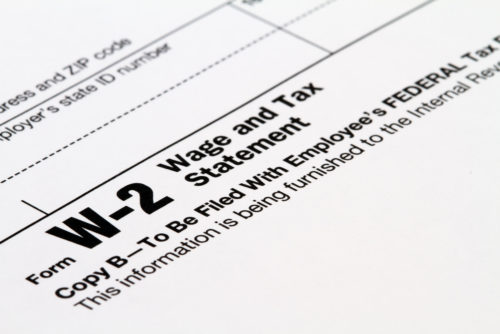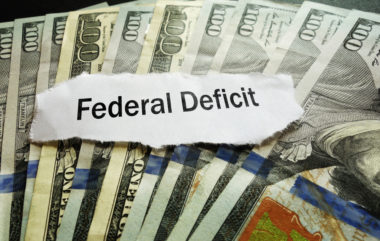Unless you live in a state that doesn’t collect income taxes from its residents, you’ll likely need to pay state income tax as well as federal income tax. Although most taxpayers pay much less to their state than the feds, the actual amount you owe depends on your earnings and the state tax rate.
Every state determines its own income tax rate and laws regarding how much citizens owe. Most states have a progressive tax plan, with the tax rate determined by how much you earn. Several states, though, have opted for a flat tax rate instead.
Table of Contents
What Is a Flat Tax Rate?
In the simplest terms, a flat tax rate means that all taxpayers in the state pay the same state income tax rate, regardless of how much they earn. Proponents say a flat tax is more fair, since everyone pays the same percentage of their income in taxes, and those top earners aren’t penalized by high tax rates.
It’s also, theoretically, an easier tax system, as it eliminates the different tax brackets and many of the complex calculations required to determine how much income is taxable at what rate. This is especially true in the states that don’t allow for deductions and exemptions.
However, opponents say a flat tax system actually penalizes low wage earners, as the amount they pay represents a more significant portion of their income. Depending on the tax rate and how much of their income is actually taxable, flat taxes can reduce take-home pay for low wage earners; meanwhile, their tax rate under a progressive system is likely to be lower than that of a flat tax.
For a low wage earner, this reduction can prove detrimental, making it more difficult to make ends meet. For someone who earns higher wages, the flat tax may allow them to bring home more pay than they would in a progressive system.
States With Flat Tax Rates
Currently, only 11 states have a flat tax rate. Two of those states, New Hampshire and Tennessee, do not tax regular income, but rather apply the tax to earnings from interest and dividends. In the remaining states, the tax rate applies to all income, but the specific rules vary.
Colorado
Colorado charges residents a 4.63% tax on their federal taxable income, with a few modifications. Colorado does not allow all of the same deductions as the federal government, so some taxpayers may find that they have more income taxed by the state than the feds.
The state does allow the same standard deduction as the federal government ($12,200 for an individual, $24,400 for a married couple), but does not allow personal exemptions or dependent deductions. If you elect to itemize your deductions instead of taking the standard deduction, you can take the same deductions as you do on your federal return. The state also allows for certain credits to reduce your tax burden.
Illinois
Illinois’ flat tax rate is 4.95%. State tax bills are calculated beginning with the federal adjusted gross income. Or, you’re taxed on income after certain deductions, such as student loan interest and IRA contributions, but not itemized or standard deductions.
You may need to add back some income that’s taxed by the state but not federally (such as certain types of interest income), but you can then deduct certain expenditures that are not taxed by the state, even if they are federally taxed.
For example, Illinois taxpayers do not pay state taxes on contributions to 529 College Savings Plans or Social Security income. Illinois does not allow itemized or standard deductions, but does allow for personal exemptions of $2,275. You may also use tax credits, including property and educational expense credits, to reduce the overall amount owed.
Indiana
Indiana taxpayers pay one of the lowest flat tax rates: 3.23%. Taxpayers can take a $1,000 personal exemption ($2,000 for married couples filing jointly) and up to a $2,500 exemption for dependents. Additional exemptions may apply based on your age and whether you are blind.
Depending on your earnings and filing type, you may also be allowed to make deductions for certain qualified expenses, such as charitable contributions, but there is no standard deduction. Indiana residents may be required to pay local and county income taxes on their earnings.
Kentucky
Kentucky adopted a 5% flat tax rate in 2018. The amount of state tax depends on the Kentucky adjusted gross income, which begins with the Federal adjusted gross income, plus or minus any differences between federal and state rules. The state does not allow for personal exemptions, and the standard deduction is only $2,590.
Married taxpayers filing jointly can only take one standard deduction, and must choose between the standard deduction or itemizing. Only certain expenses can be itemized, including home mortgage interest and charitable deductions. Several deductions were eliminated for the 2019 tax year, including medical and dental expenses, health insurance and long term care insurance premiums, and moving expenses.
Massachusetts
Massachusetts residents pay a 5.05% flat tax on their earnings; beginning January 1, 2020, the rate drops to 5%. Although the state does not have a standard deduction, taxpayers can take a $4,400 personal exemption ($8,800 for anyone married filing jointly.) The dependent exemption is only $1,000 per dependent.
Other allowed exemptions include adoption expenses, bank interest up to $200, and medical/dental expenses. People over age 65 and those who are blind can also take exemptions up to predetermined amounts.
Like in other states, taxable income is calculated by making additions or subtractions from federal adjusted gross income, then subtracting exemptions and deductions, which include such expenses as undergraduate student loan interest, commuting expenses, and child care.
Michigan
Michigan’s income tax rate is 4.25%; some cities have additional income taxes on top of the state bill. The personal exemption is $4,400 per person, with some people qualifying for an additional $2,700 exemption based on disability status. Seniors born prior to 1946 may be able to take a larger exemption of $20,000.
As with most states, Michigan bases taxable income on federal AGI with state-specific additions and subtractions, minus any credits. Michigan uses total household resources (all income, both taxable and nontaxable with a few exceptions) to determine eligibility for Homestead Property Tax Credit claims and Home Heating Credit claims.
New Hampshire
Technically speaking, New Hampshire does not have a state income tax. However, the state does levy a 5% tax on earnings from interest and dividends. The tax only applies on earnings greater than $2,400 for individuals and $4,800 for couples. People who are blind, over age 65, or disabled can take a $1,200 exemption on their interest earnings.
North Carolina
North Carolina’s flat tax rate is 5.25%. The state allows a standard deduction of $10,000, plus $2,500 for every dependent. The taxable income is based on federal AGI, with state-specific additions and subtractions. In addition to the standard deduction, North Carolina residents can deduct home mortgage interest, property taxes paid, medical expenses, and charitable contributions from their taxable income.
Pennsylvania
Residents of the Keystone State pay one of the lowest flat tax rates at 3.07%. However, the state does not have a standard deduction or allow exemptions for individuals and their dependents.
All types of income are counted when determining taxable income, including wages, interest and dividends, income from estates and trusts, gambling winnings, business profits, gains from the sale of property, and income from patents, copyrights, and rents. The only allowable deductions are contributions to medical and health savings accounts, and 529 college savings plans. There are some limited tax credit options, primarily for low-income residents and those who paid income taxes to other states.
Tennessee
Like New Hampshire, Tennessee does not have a state income tax. However, there is a 2% tax rate on interest earned from bonds and notes and dividends. There is a general exemption for the first $1,250 for single filers and $2,500 for joint filers. There are additional exemptions for anyone over age 65, blind, or disabled. In addition, Tennessee doesn’t require anyone who reaches 100 years of age to pay any taxes.
Utah
Finally, Utah collects 4.95% of residents’ income for taxes each year to fund education. Taxable income is based on federal AGI with a few adjustments. Utah taxpayers are allowed to take either the standard or itemized deduction they took on their federal return, as well as an additional $579 personal exemption per dependent.
The state also allows for an array of deductions and credits to reduce the tax bill. For instance, stay-at-home parents of children under 12 months as of the end of the tax year can take a $100 per-child credit if they meet income guidelines. You can also take credits for college savings in a 529 plan, and certain health insurance expenses.
Image Source: https://depositphotos.com/





